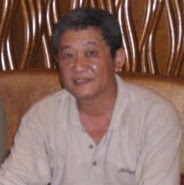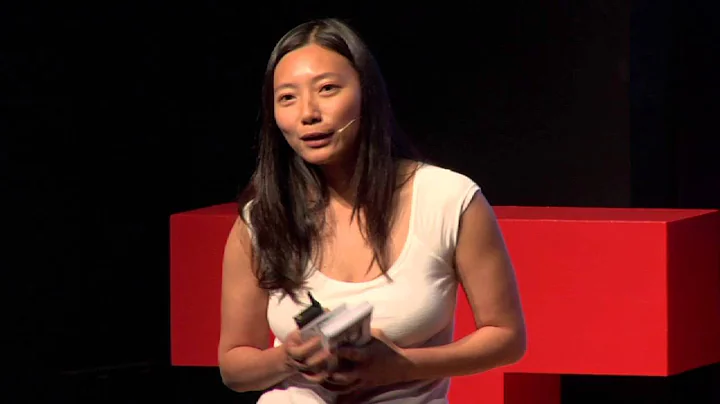Jing Yun Liu
age ~54
from San Francisco, CA
- Also known as:
-
- Jing Y Liu
- Jin G Liu
- Jingyun Lin
- Liu Jingyun
- Phone and address:
- 888 7Th St #LL-40, San Francisco, CA 94107
Jing Liu Phones & Addresses
- 888 7Th St #LL-40, San Francisco, CA 94107
Name / Title
Company / Classification
Phones & Addresses
President
Skyroam
Wireless
Wireless
180 Sansome St SUITE 400, San Francisco, CA 94104
Secretary
Home System Group
President
KAIWEI INTERNATIONAL INCORPORATED
479 Gdn Ave, San Bruno, CA 94066
Director
American Society for Biomedical and Medical Advances (Asbma)
Principal
Simo Wireless Inc
Radiotelephone Communication
Radiotelephone Communication
490 Thompson Ave, Mountain View, CA 94043
Us Patents
-
Instantiating Objects In Distributed Database Systems
view source -
US Patent:6741997, May 25, 2004
-
Filed:Jun 14, 2001
-
Appl. No.:09/881507
-
Inventors:Jing Liu - Pacifica CA
Curtis A. Elsbernd - Belmont CA
Mahesh Subramaniam - Foster City CA -
Assignee:Oracle International Corporation - Redwood Shores CA
-
International Classification:G06F 1730
-
US Classification:707102, 707 10
-
Abstract:Techniques used in a distributed database system for simplifying copying of objects from one database system in the distributed database system to another and establishing the infrastructure necessary for the distributed system in the database systems. One application of the techniques is setting up a cache database system that has a subset of the objects in another database system and establishing a link for redirecting misses between the cache and the other database system. Also included is the infrastructure in the cache and the other database system for an authentication proxy that establishes sessions in the other database system for users to perform operations that have been redirected as a result of a miss in the cache. The techniques require only that the user supply simple descriptions of some of the objects to be copied; the techniques locate the necessary dependent objects and make objects for the infrastructure. Some of these are descriptions of the infrastructure objects that are copied to the cache and executed there and others are objects that are added directly to the other database system.
-
Instantiation Of Objects For Information-Sharing Relationships
view source -
US Patent:7103612, Sep 5, 2006
-
Filed:Mar 26, 2003
-
Appl. No.:10/400225
-
Inventors:Wayne E. Smith - Palo Alto CA, US
Jing Liu - Pacifica CA, US
James Stamos - Saratoga CA, US
Mahesh Subramaniam - Foster City CA, US -
Assignee:Oracle International Corporation - Redwood Shores CA
-
International Classification:G06F 17/30
-
US Classification:707103R, 707100, 707101, 707102, 7071041
-
Abstract:A method and system are provided for instantiating objects for participation in information sharing relationships. According to one technique, a copy of an object is made, where the copy includes all changes made prior to a particular point in time, and no changes made after the particular point in time. The copy is used to create a second object. Data that reflects the particular point in time is stored, and subsequently used to determine which changes should be applied to the second object. Data that indicates that the creation time of the second object is stored, and subsequently used to determine which changes should be applied to the original object.
-
Network Monitoring Using Virtual Packets
view source -
US Patent:8451731, May 28, 2013
-
Filed:Jul 25, 2008
-
Appl. No.:12/180193
-
Inventors:Rosanna Lee - Palo Alto CA, US
Hong Zhu - Diamond Bar CA, US
Rangaswamy Jagannathan - Sunnyvale CA, US
Xiaohong Pan - San Ramon CA, US
Derek Sanders - Saratoga CA, US
Kishor Kakatkar - Pune, IN
Jing Liu - Cupertino CA, US -
Assignee:Xangati, Inc. - Cupertino CA
-
International Classification:H04J 1/16
H04J 3/14
G06F 15/173 -
US Classification:370235, 370253, 709224
-
Abstract:A network monitoring device includes a flow processing element, disposed to receive flow information relating to network flows, and to generate a set of virtual packets, each representing a portion of a network flow. The virtual packets are maintained in a time-sequential order, and read by elements of the network monitoring device to generate information relating to network traffic, such as symptoms affecting the communication network, problems affecting the communication network, and otherwise. The network monitoring device randomly samples virtual packets, with at least one of two effects: (1) flow information from traffic reporting devices that are themselves sampling at differing rates can be equalized, with the effect of standardizing information from all of them; (2) the network monitoring device itself can restrict its attention to a fraction of all virtual packets, with the effect of keeping up with a relatively large number of virtual packets.
-
Network Monitoring Of Behavior Probability Density
view source -
US Patent:8639797, Jan 28, 2014
-
Filed:Jul 25, 2008
-
Appl. No.:12/180243
-
Inventors:Xiaohong Pan - Fremont CA, US
Kishor Kakatkar - Santa Clara CA, US
Derek Sanders - Saratoga CA, US
Rangaswamy Jagannathan - Sunnyvale CA, US
Jing Liu - Cupertino CA, US
Rosanna Lee - Palo Alto CA, US -
Assignee:Xangati, Inc. - Cupertino CA
-
International Classification:G06F 15/173
-
US Classification:709224, 709223, 709225, 709226
-
Abstract:A network monitoring system maintains both information regarding historical activity of a network, and information regarding emergent activity of the network. Comparison of historical activity of the network with emergent activity of the network allows the system to determine whether network activity is changing over time. The network monitoring system maintains data structures representing a p. d. f. for observable values of network parameters. Recent activity of the network can be compared with both the p. d. f. for historical activity and for emergent activity to aid in determining whether that recent activity is within the realm of normal, and whether network activity is changing over time. The network monitoring system adjusts that information regarding historical activity of a network in response to emergent activity of that network. The network monitoring device determines information regarding time-dependent activity of that network in response to spectral analysis regarding historical activity of that network.
-
Packaged Wavelength Converted Light Emitting Device
view source -
US Patent:20170133560, May 11, 2017
-
Filed:Jun 23, 2015
-
Appl. No.:15/319095
-
Inventors:- Eindhoven, NL
Jing Liu - Fremont CA, US
Chung-Chih Juan - Fremont CA, US
Thierry Maurice Francois De Smet - Sunnyvale CA, US -
International Classification:H01L 33/50
H01L 33/54
H01L 25/075 -
Abstract:Embodiments of the invention include a plurality of light emitting devices (), one of the light emitting devices in the plurality being configured to emit light having a first peak wavelength. A wavelength converting layer () is disposed in a path of light emitted by the plurality of light emitting devices. The wavelength converting layer () absorbs light emitted by the light emitting device and emits light having a second peak wavelength. The light emitting devices () are mechanically connected to each other only through the wavelength converting layer (). In other embodiments a light converting layer is placed over the light emitting devices and an adhesive or optical element layer is placed at the side surfaces and over the light converting layer, the light emitting devices are mechanically connected to each other only through the wavelength converting layer.
-
Practical Two-Frame 3D+2D Tv
view source -
US Patent:20160381353, Dec 29, 2016
-
Filed:Jun 24, 2014
-
Appl. No.:14/901020
-
Inventors:- Okland CA, US
Jing Liu - Hayward CA, US -
International Classification:H04N 13/04
-
Abstract:Our inventive method enables stereoscopic 3D displays to be watched by 3D and 2D viewers simultaneously. Ghosted images observed on traditional 3D displays can be eliminated for viewers without stereoscopic glasses while 3D perception is preserved for viewers with glasses. A preferred method for displaying an image on a 3D+2D television comprises displaying a composite image (“L+wN”), comprising a left (“L”) image and a weighted image (“wN”), for a first period of time; and displaying a right (“R”) image for a second period of time. The display of “wN” partially cancels out the perception of “R” to mitigate ghosting for viewers not wearing 3D eyeglasses. In the illustrative embodiment, “wN” is a weighted negative version of “R”.
Isbn (Books And Publications)

Advances in Natural Computation: Second International Conference, ICNC 2006, Xi'an, China, September 24-28, 2006, Proceedings, Part I
view sourceAuthor
Jing Liu
ISBN #
3540459014

Advances in Natural Computation: Second International Conference, ICNC 2006, Xi'an, China, September 24-28, 2006, Proceedings, Part II
view sourceAuthor
Jing Liu
ISBN #
3540459073

Fuzzy Systems and Knowledge Discovery: Third International Conference, FSKD 2006, Xi'an, China, September 24-28, 2006, Proceedings
view sourceAuthor
Jing Liu
ISBN #
3540459162
Flickr
Youtube
News

2 Sleep Supplements That Experts Warn May Cause Dependence
view source- To learn more about potentially habit-forming sleep aids, we spoke to Dr. Jing Liu, OMD, PHD of Sol Nutrition. She told us that among others, melatonin and sleep aids containing antihistamines may lead to dependency. Learn more about these supplements and their potential side effects below.
- Date: Apr 19, 2023
- Category: Health
- Source: Google

Chinese COVID-19 Vaccine Phase 2 Trial Results: Safe and Induces an Immune Response
view source- ndomised, double-blind, placebo-controlled, phase 2 trial by Feng-Cai Zhu, Xu-Hua Guan, Yu-Hua Li, Jian-Ying Huang, Tao Jiang, Li-Hua Hou, Jing-Xin Li, Bei-Fang Yang, Ling Wang, Wen-Juan Wang, Shi-Po Wu, Zhao Wang, Xiao-Hong Wu, Jun-Jie Xu, Zhe Zhang, Si-Yue Jia, Bu-Sen Wang, Yi Hu, Jing-Jing Liu, Ju
- Date: Jul 20, 2020
- Category: More news
- Source: Google

Unprecedented Heat Waves Will Smash through the U.S. and European ...
view source- Just like what the Terminator does in the Hollywood sci-fi film, this soft machine appears rather intelligent and can transform itself depending on the space it occupies, according to Jing Liu from the Tsinghua University This unusual behavior in robots perfectly resembles how living organisms react
- Date: Mar 16, 2015
- Category: Sci/Tech
- Source: Google

Future T-1000 robots applaud as scientists invent self-powered liquid metal
view source- "The soft machine looks rather intelligent and can deform itself according to the space it voyages in, just like Terminator does from the science-fiction film," explained Tsinghua University scientist Jing Liu. "These unusual behaviors perfectly resemble the living organisms in nature."
- Date: Mar 12, 2015
- Category: Sci/Tech
- Source: Google

3-D Laser Map Shows Earthquake Zone Before and After
view source- Other co-authors of the paper are: Austin Elliott and Peter Gold, UC Davis; J. Ramon Arrowsmith, Arizona State University; Alejandro Hinojosa Corona and J. Javier Gonzalez Garcia, CICESE, Mexico; Eric Fielding, NASA Jet Propulsion Laboratory; and Jing Liu-Zeng, Chinese Academy of Sciences.
- Date: Feb 10, 2012
- Category: Sci/Tech
- Source: Google

Khg Jing Liu
view source
Frances Jing Liu
view source
Jing Liu
view source
Jing Liu ( )
view source
Jing Jing Liu
view source
Christy Jing Liu
view source
Liu Jing
view source
Jing Tracy Liu
view sourceGoogleplus

Jing Liu (Amanda)
Work:
Oracle Corporation - Software Engineer (2013)
Education:
University of Pennsylvania - TCOM, Southeast University - Computer Science & Engineering, Chengdu Foreign Languages School - Senior High School, Chengdu Foreign Languages School - Junior High School

Jing Liu
Education:
Panjin Vocational and Technical College - Communication network and equipment

Jing Liu
Lived:
Fremont,CA

Jing Liu
Education:
Uppsala University - Computer Science

Jing Liu (刘靖)

Jing Liu

Jing Liu

Jing Liu
Get Report for Jing Yun Liu from San Francisco, CA, age ~54













